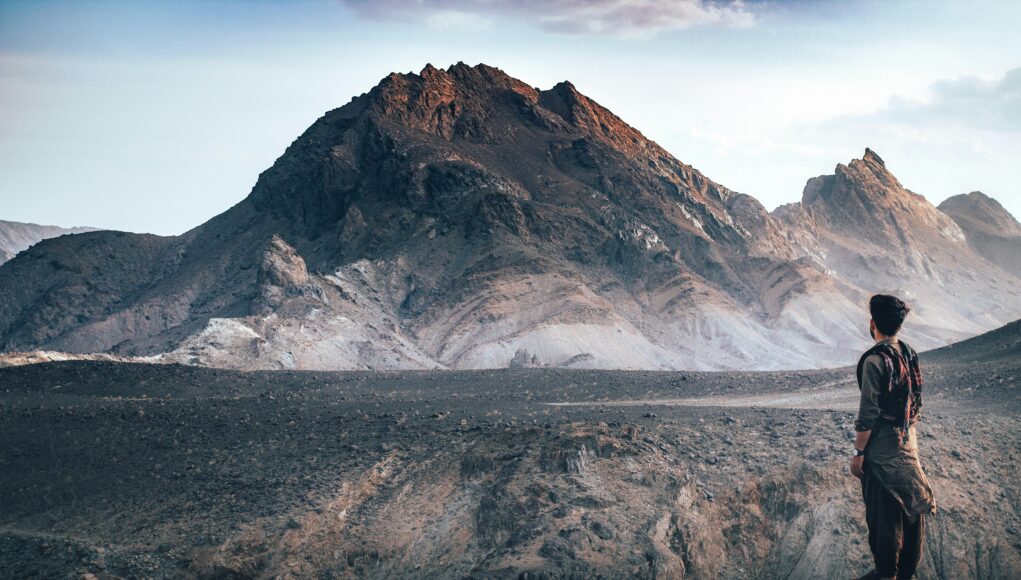Embarking on a journey to conquer majestic mountains is a dream for many adventure seekers.
The allure of towering peaks, breathtaking vistas, and the thrill of challenging hikes draws travelers from all corners of the globe. Whether you are an experienced mountaineer or a casual hiker, the mountains offer something for everyone. From the rugged terrains of the Rockies to the serene landscapes of the Alps, each mountain range presents unique challenges and stunning beauty. This guide will explore some of the most iconic mountains to conquer, provide practical tips for your journey, and share stories that will inspire you to lace up your hiking boots and hit the trails.

Choosing the Right Mountain for Your Adventure
When planning a mountain adventure, the first step is selecting the right peak to conquer. Factors such as your fitness level, experience, and the type of scenery you desire will influence your choice. For beginners, mountains like Mount Monadnock in New Hampshire or Mount Tammany in New Jersey offer relatively easy trails with rewarding views. More experienced hikers may want to tackle the challenging trails of Mount Rainier in Washington or the iconic Half Dome in Yosemite National Park, California.
For those seeking international adventures, the Swiss Alps provide stunning landscapes and well-marked trails. The Matterhorn, for instance, is a breathtaking sight, but the ascent requires technical climbing skills and proper gear. Researching the mountain’s difficulty level and trail conditions is crucial for a safe and enjoyable experience.
Essential Gear for Mountain Climbing
Having the right gear can make or break your mountain climbing experience. Essential items include sturdy hiking boots, weather-appropriate clothing, a reliable backpack, and hydration systems. For higher altitudes, consider investing in climbing gear such as harnesses, helmets, and ropes. A good rule of thumb is to budget around $300 to $500 for quality gear, depending on what you already own.
Don’t forget to pack a first aid kit, a map, and a compass or GPS device. Additionally, a portable charger for your phone can be a lifesaver in case of emergencies. Always check the weather forecast before heading out, as conditions can change rapidly in mountainous regions.

Planning Your Route and Timing
Once the mountain is chosen and gear is packed, planning your route is the next critical step. Many popular hiking trails have established routes that vary in length and difficulty. For example, the Inca Trail to Machu Picchu spans approximately 26 miles and takes about four days to complete, while the Appalachian Trail offers sections that can be tackled in day hikes or through multi-day treks.
Timing is also essential. The best months to hike in the Rockies are typically late June to early September when the weather is milder and trails are more accessible. Conversely, the Alps are best visited from late June to early September as well, but be prepared for sudden weather changes. Always start your hikes early in the day to avoid afternoon storms and to enjoy cooler temperatures.
Safety First: Understanding Risks and Precautions
Mountain climbing comes with inherent risks, and understanding these is vital for a safe adventure. Always inform someone of your plans and estimated return time. Carry a whistle, a flashlight, and a multi-tool for emergencies. It’s also wise to hike with a buddy, especially in remote areas.
Altitude sickness is another concern for those climbing at higher elevations. Symptoms can include headaches, nausea, and dizziness. To mitigate this risk, ascend slowly and stay hydrated. If symptoms occur, descending to a lower altitude is crucial. Familiarize yourself with the signs of hypothermia and frostbite, especially in colder climates.
Experiencing Local Culture and Cuisine
Conquering mountains is not just about the climb; it’s also about immersing oneself in the local culture. Many mountain regions boast unique culinary traditions. For instance, after a long day of hiking in the Swiss Alps, indulging in fondue is a must. In the Andes, savoring a hearty plate of ceviche can be a refreshing reward after a challenging trek.
Engaging with local communities can enhance your experience. Consider staying in mountain lodges or guesthouses where you can interact with locals, learn about their traditions, and even participate in cultural activities. This not only supports the local economy but also enriches your journey.
Capturing the Moment: Photography Tips
Mountains provide some of the most stunning backdrops for photography. To capture the beauty of your adventure, consider the following tips. First, shoot during the golden hours—early morning or late afternoon—when the light is soft and warm. Bring a tripod for stability, especially in low-light conditions. Wide-angle lenses are ideal for capturing expansive landscapes, while zoom lenses can help you focus on distant peaks.
Don’t forget to take candid shots of fellow hikers and the local wildlife. Remember to respect nature and wildlife by keeping a safe distance and not disturbing their habitats. Lastly, consider sharing your journey on social media to inspire others to explore the beauty of the mountains.
Conclusion: The Call of the Mountains
Conquering majestic mountains is a transformative experience that offers not only physical challenges but also profound connections with nature and culture. Each peak tells a story, and every trail leads to new discoveries. Whether it’s the thrill of reaching a summit or the serenity of a quiet valley, the mountains beckon adventurers to explore their grandeur. With the right preparation, gear, and mindset, anyone can embark on this incredible journey. So, pack your bags, lace up your boots, and answer the call of the mountains!
Frequently Asked Questions
What’s the best time of year to visit?
The best time to visit mountain regions varies by location. In the Rockies, late June to early September is ideal due to milder weather and accessible trails. The Swiss Alps are best visited from late June to early September as well, but be prepared for sudden weather changes. For high-altitude climbs, consider the dry season, typically from May to September in places like Nepal.
How much should I budget for this trip?
Budgeting for a mountain adventure can vary greatly depending on the location and activities. For a week-long trip, expect to spend around $1,000 to $2,500, including accommodation, food, transportation, and gear rental. For example, a guided trek in the Himalayas can cost approximately $1,200, while a self-guided hike in the Rockies may be around $800.
What should I pack for a mountain hike?
Essential items include sturdy hiking boots, moisture-wicking clothing, a waterproof jacket, a first aid kit, a map or GPS device, and plenty of water. Depending on the altitude, additional gear such as climbing equipment may be necessary. Always pack layers to adapt to changing weather conditions.
Are there safety concerns I should be aware of?
Yes, mountain hiking comes with risks such as altitude sickness, sudden weather changes, and wildlife encounters. Always inform someone of your plans, carry a whistle and flashlight, and hike with a buddy. Familiarize yourself with the signs of altitude sickness and be prepared to descend if symptoms occur.
How can I get to the trailheads?
Transportation options vary by region. In the U.S., many national parks offer shuttle services to popular trailheads. In Europe, trains and buses connect major cities to mountain areas. Renting a car can provide flexibility, especially in remote locations. Always check local transportation options in advance.
What are the accommodation options available?
Accommodation ranges from luxury lodges to budget hostels and camping sites. In popular hiking areas, consider booking in advance, especially during peak season. For a unique experience, look for mountain huts or guesthouses that offer local hospitality and meals.
Are there any local customs I should know about?
Yes, understanding local customs can enhance your experience. In many mountain regions, it’s customary to greet fellow hikers and respect nature by following Leave No Trace principles. In some cultures, sharing food and stories is a sign of friendship. Always be respectful of local traditions and practices.
Any insider tips for a successful mountain adventure?
Start your hikes early to avoid crowds and afternoon storms. Stay hydrated and take regular breaks to enjoy the scenery. Consider joining guided tours for more challenging climbs, as they provide valuable insights and safety. Lastly, keep an open mind and be prepared for unexpected changes in your plans.



















